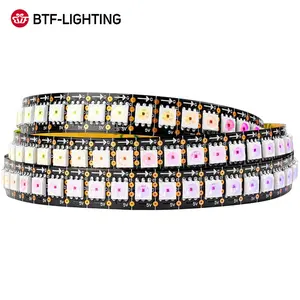
Led Strip Wholesales Price 16.4ft Ip20 Ip30 Dream Color Flexible Lighting Led Strip APA102 Sk9822















Conductive strips are essential components in various electrical and electronic applications. These strips serve as a bridge for electrical current, ensuring devices function correctly by providing a path for electricity to follow. Their versatility allows them to be integrated into numerous fields, from consumer electronics to industrial machinery.
The materials used for conductive strips can vary, with conductive copper strip and conductive rubber strip being common choices due to their excellent electrical conductivity and flexibility. Copper foil strip is another variant, often sought after for its superior thermal and electrical conductivity, making it ideal for EMI shielding and grounding applications.
Conductive strips are not one-size-fits-all; they come in different dimensions, such as copper tape 25mm x 3mm, to suit various applications. For instance, heat conductive tape is frequently used in electronic devices to manage heat dissipation. In environments where static discharge is a concern, products like esd shoe cover with conductive strip are crucial for maintaining safety and protecting sensitive equipment.
The advantages of using conductive strips are manifold. Their durability and resistance to breakage under tension are notable, as is their ability to withstand daily wear and tear when maintained properly. Additionally, the flexibility of these strips allows for their use in a wide range of applications, from simple electrical repairs to complex circuit designs.
To ensure the longevity of conductive strips, proper maintenance is key. This involves regular inspections and cleaning, as well as storage in appropriate conditions to prevent degradation. While these products are designed to be durable, safeguarding them from harsh environments and handling them with care can significantly extend their usability.
When selecting conductive strips, it's important to consider the specific requirements of the application. Factors such as width, thickness, and adhesive quality, as seen in options like heat sink adhesive tape, play a critical role in performance. Consulting with experts or technical datasheets can provide valuable guidance in choosing the right type of conductive strip for your needs.